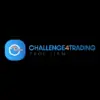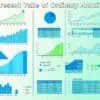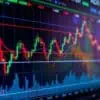In the expansive realm of foreign exchange trading, commonly known as forex trading or FX, a comprehensive guide awaits those delving into this global market for the exchange of foreign currencies. This market, the largest in the world, holds sway over various facets of daily life, influencing everything from the cost of imported goods to the expenses incurred while enjoying a vacation.

Forex Trading Essentials
Forex trading, in its essence, mirrors the currency exchange transactions undertaken during international travel. Traders engage in the buying of one currency and the simultaneous selling of another, navigating the ever-changing exchange rates dictated by the forces of supply and demand. This dynamic activity unfolds in the foreign exchange market, a 24-hour global marketplace that operates from Monday to Friday. Unlike stock markets, forex trading is conducted over the counter (OTC), devoid of a physical exchange. Instead, a network of global banks and financial institutions oversees these transactions.
Dominance of Institutional Traders
In this vast market, institutional traders dominate the landscape, including individuals working for banks, fund managers, and multinational corporations. Their engagements often revolve around speculation or hedging against potential fluctuations in exchange rates, rather than the physical possession of the currencies involved.
Role of Currencies
Currencies, each identified by a three-letter code akin to a stock’s ticker symbol, play a pivotal role in forex trading. While over 170 currencies exist worldwide, the U.S. dollar (USD) takes center stage in a majority of transactions. Following closely is the euro (EUR), the currency accepted across 19 European Union countries.
Major Pairs and Exchange Rates
The focal point of forex trading lies in currency pairs, expressed as combinations of two currencies being exchanged. Seven major pairs, known as the majors, constitute around 75% of the forex market’s trading volume. Examples include EUR/USD, USD/JPY, and GBP/USD. Understanding how forex trades are quoted is fundamental. The exchange rate denotes the amount of the quote currency required to purchase one unit of the base currency. For instance, if the EUR/USD exchange rate is 1.2, it implies that €1 will acquire $1.20.
Three Pillars of Forex Trading
Forex trading, predominantly a speculative endeavor, unfolds in three primary ways:
- Spot Market: The primary arena for real-time currency pair exchanges based on supply and demand.
- Forward Market: Traders can enter binding contracts to lock in exchange rates for future transactions.
- Futures Market: Involves standardized contracts to buy or sell a predetermined currency amount at a specified future date.
Mastering Key Forex Terms
To navigate this intricate landscape, traders must grasp key forex terms such as currency pairs, pips, bid-ask spread, lot sizes, leverage, and margin. The market’s dynamics are influenced by various factors, including interest rates, central bank policies, economic growth rates, and the political environment.
Inherent Risks and Regulatory Caution
However, the allure of forex trading comes with inherent risks, especially due to leverage and margin usage. The market’s constant fluctuations demand careful risk management to avoid substantial losses. The Securities and Exchange Commission warns of potential fraud, emphasizing the professional nature of many forex traders.
Forex’s Impact on Daily Life
While forex trading may not be a common pursuit for individual investors, its impact reverberates in daily life. Exchange rate movements directly affect the costs of imports and overseas travel, making it crucial for consumers to monitor forex market activities.
Tips for Aspiring Forex Traders
For those embarking on the journey of forex trading, a set of invaluable tips emerges:
- Educate Yourself: Thoroughly understand currency pairs and their influencing factors before risking capital.
- Create a Trading Plan: Establish clear goals, risk tolerance, methodology, and evaluation criteria. Adhere to the plan to ensure rational decision-making.
- Practice: Utilize risk-free practice accounts to test trading plans in real market conditions.
- Forecast Market Conditions: Employ fundamental and/or technical analysis to anticipate market movements.
- Know Your Limits: Define risk per trade, set leverage ratios sensibly, and never risk more than affordable losses.
- Implement Stop-Loss Orders: Manage risk and protect profits with strategic stop and limit orders.
- Emotion-Free Trading: Resist the temptation of impulsive actions in response to market fluctuations. Stick to the trading plan for consistent success.
- Consistency is Key: Maintain a steady approach to trading, emphasizing discipline and patience.
- Periodic Plan Evaluation: Adapt trading plans to evolving goals and financial situations.
- Choose the Right Partner: Select a reputable trading platform like FOREX.com, offering competitive pricing, excellent customer service, and educational resources for a robust forex trading experience.











